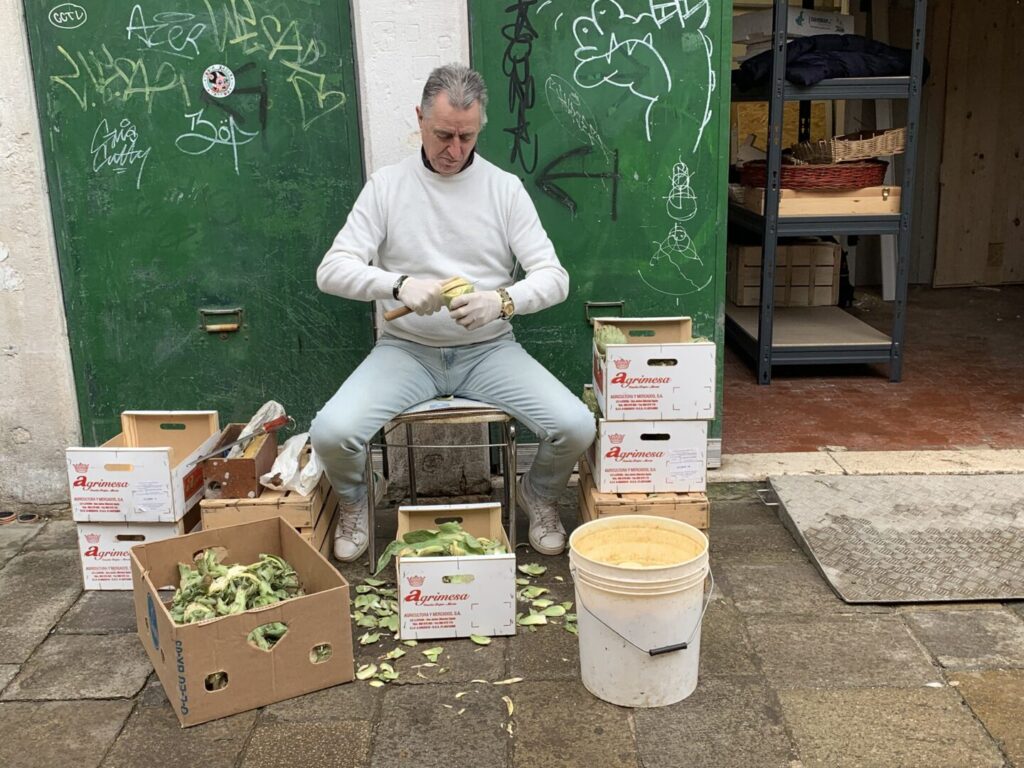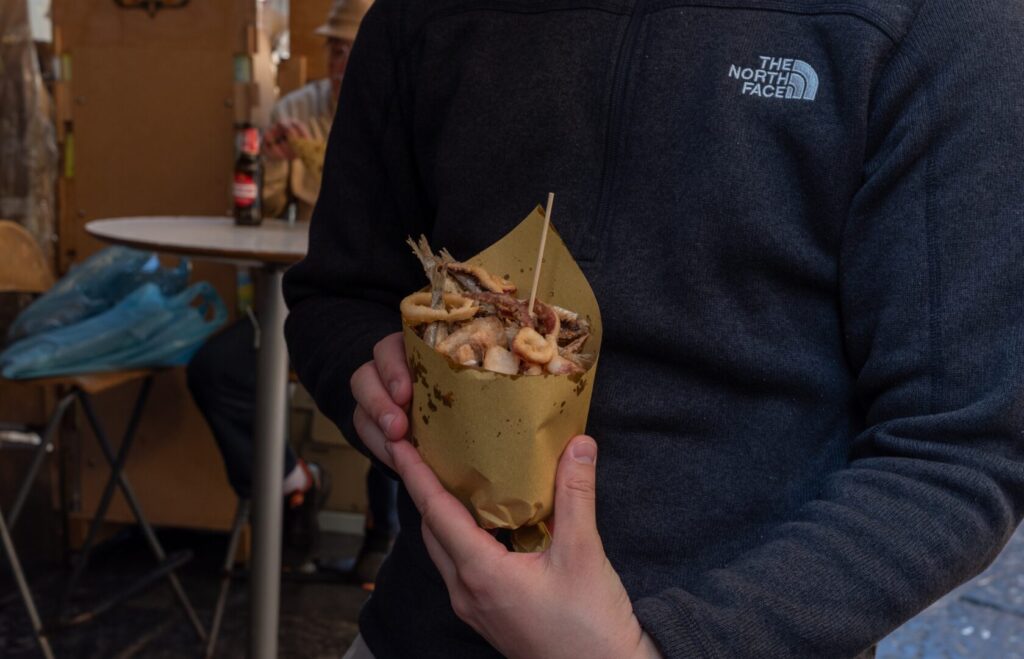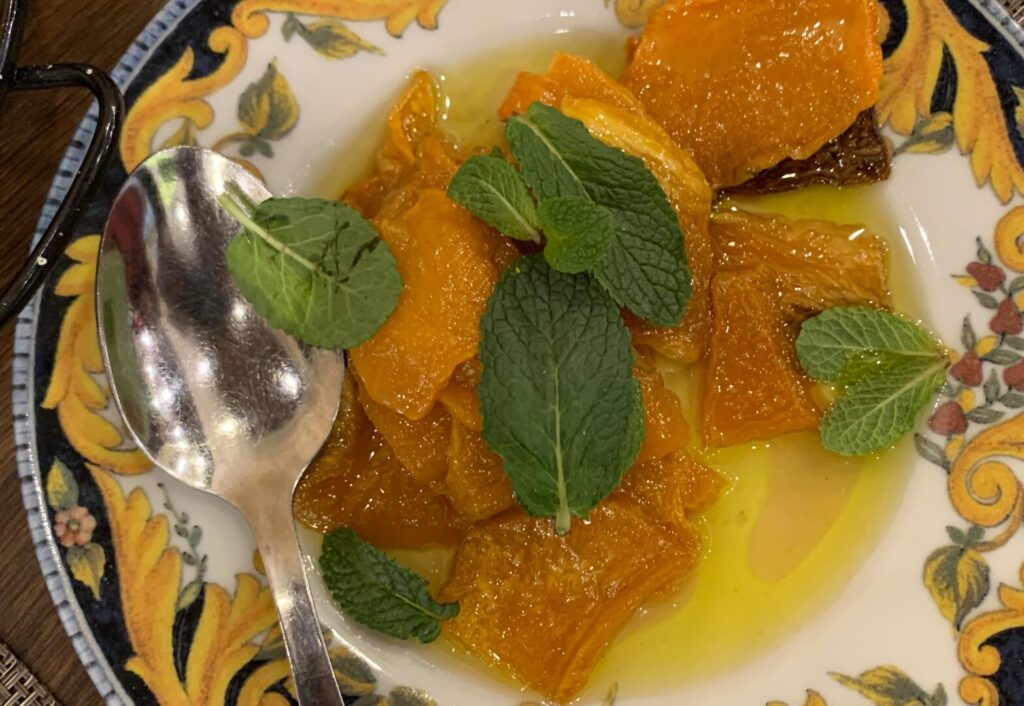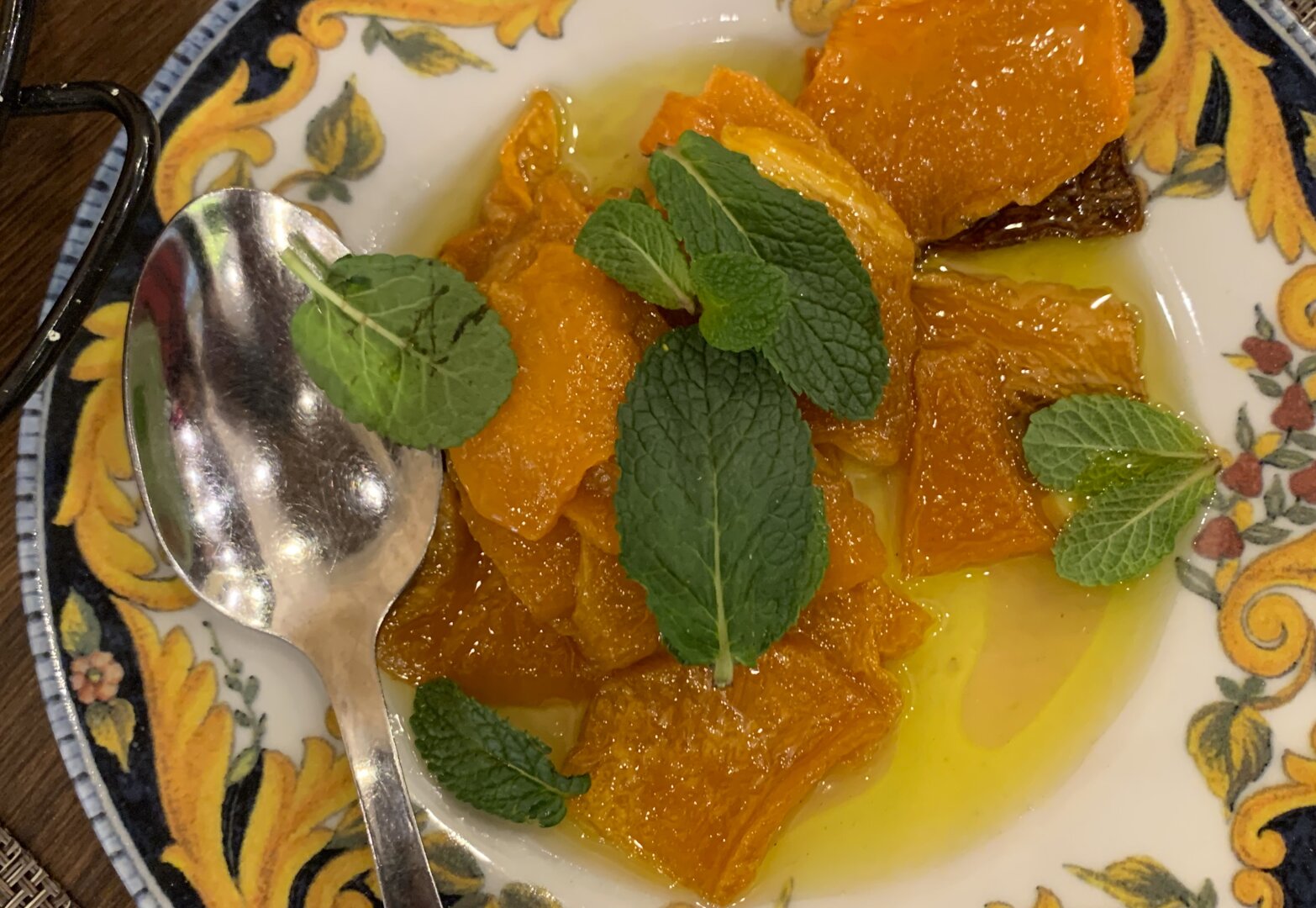When you think of Italian cuisine, your mind probably jumps to pizza, pasta, and parmesan. But tucked away in local traditions and family kitchens across Italy are vegetarian gems that even seasoned food lovers may never have heard of. These regional specialties tell stories of peasant roots, seasonal ingredients, and culinary creativity that go far beyond the usual suspects. From the Alpine hills to the sun-soaked shores of Sicily, here are 8 lesser-known vegetarian dishes that deserve a spot on your plate. Come try our favorites at Streat Turin Food tour and our Bologna Food tour.
1. Peperoni in Hazelnut Sauce – Turin
In Piedmont, sweet roasted peppers meet the region’s most iconic nut: the hazelnut. This creamy, slightly sweet sauce made with nocciole delle Langhe is a beautiful pairing for grilled peppers.
Historical note:
The nocciola tonda gentile delle Langhe, native to the rolling hills of Piedmont, is considered one of the finest hazelnut varieties in the world. Its sweet, delicate flavor and perfect crunch have made it a prized ingredient not only in savory dishes but also in desserts like gianduja and various confections from Alba and beyond.
Basic recipe:
- Roasted and peeled red and yellow bell peppers
- Toasted hazelnuts
- Soaked stale bread
- Garlic, white wine vinegar, extra virgin olive oil
Blend into a smooth, nutty sauce and serve at room temperature—ideal as a starter or antipasto.
2. Salsa Verde – Bologna (with Ferrarese Bread)

This punchy green sauce from Bologna might traditionally accompany boiled meats, but it becomes a stunning vegetarian treat when spread over fresh coppia ferrarese, a PGI-certified bread from nearby Ferrara.
Historical note:
Salsa verde is rooted in Emilia-Romagna’s tradition of using herbs and day-old bread to create flavorful accompaniments. Its bold, herbaceous profile contrasts beautifully with rustic grains. The coppia ferrarese, with its unique twisted shape and crisp texture, has been a staple since at least the 13th century, historically served at noble banquets in Ferrara. The combination of this distinctive bread with salsa verde showcases a union of two culinary treasures from neighboring cities.
Basic recipe for the sauce:
- Fresh parsley
- Vinegar-soaked bread
- Garlic, capers (anchovies optional), olive oil
Serve it like this:
Generously spread over toasted slices of pane ferrarese or use it as a dip alongside a bread basket—it elevates any aperitivo or picnic.
3. Carciofo alla Romana – Rome

A jewel of Roman springtime cuisine, Carciofi alla Romana are tender artichokes stuffed with herbs and braised until silky. A perfect example of how simplicity becomes magic in Italian cooking.
Historical note:
This dish is rooted in the culinary traditions of Rome’s working-class neighborhoods. The artichokes used are typically the romanesco variety, known for their compact shape and tender leaves. The use of wild mint (mentuccia) and garlic reflects the Roman preference for bold, aromatic flavors.
Basic recipe:
- Romanesco artichokes (or globe artichokes)
- Garlic, wild mint (mentuccia), parsley
- Lemon, salt, olive oil
- white wine
Cleaned and filled with a herb mixture, the artichokes are cooked upside-down in a pan with water wine, and olive oil until meltingly tender. A humble dish with incredible depth.
4. Ribollita – Florence
This Tuscan “reboiled” soup is built on day-old bread and seasonal vegetables—especially cavolo nero—and is even better the next day.
Historical note:
Originating in the Middle Ages, ribollita was a dish created by peasants to utilize leftover bread and vegetables. The name “ribollita” means “reboiled,” referring to the practice of reheating the soup over several days to enhance its flavors.
Basic recipe:
- Black kale, white beans, onions, carrots, celery
- Tuscan stale bread
- Garlic, olive oil, rosemary
Serve hot with a drizzle of fresh olive oil for the ultimate comfort food experience.
5. Hearts of Artichoke – Venice

In the Venetian Lagoon, the artichokes from Sant’Erasmo Island are considered some of the finest in Italy. The fertile island is known for producing the carciofo violetto di Sant’Erasmo, a tender and delicately flavored variety that shines when simply prepared.
Historical note:
The cultivation of artichokes on Sant’Erasmo dates back to the 19th century, with records from the Austrian land registry indicating their presence. The unique soil composition of the island contributes to the distinctive flavor of these artichokes.
Try this:
- Fresh artichoke hearts from Sant’Erasmo
- Lemon, olive oil, garlic, and parsley
- Braise or steam gently
These tender artichokes are often prepared with a touch of lemon and olive oil, allowing their natural flavor to stand out.
6. Fried Seaweed – Naples

Naples surprises once again with alghe fritte, a rare street food made of crispy battered seaweed. It’s salty, crunchy, and a true taste of the sea.
Basic recipe:
- Edible seaweed (lattuga di mare)
- Light batter: flour, sparkling water, salt
- Deep fry until golden and crisp
The flavor? Somewhere between tempura and the Mediterranean breeze.
7. Sweet-and-Sour Pumpkin – Palermo

Sicily’s love for sweet-and-savory dishes is beautifully captured in zucca in agrodolce. This marinated pumpkin dish is served cold and sings with contrast.
Historical note:
This dish reflects the Arab influence on Sicilian cuisine, where the combination of sweet and sour flavors was commonly used. The use of vinegar and sugar to marinate the pumpkin creates a balance of flavors that is characteristic of many traditional Sicilian dishes.
Basic recipe:
- Thin slices of fried pumpkin
- Marinade: white vinegar, sugar, garlic, fresh mint
- Let it rest for a few hours or overnight
Fragrant, tangy, and totally unexpected.
8. Sweet Crispelle – Catania

These Sicilian fritters are golden, fluffy, and often served around Christmas—but we say they deserve a year-round spotlight.
Historical note:
Frittelle have been a part of Sicilian cuisine for centuries, with variations found throughout the island. The use of orange zest and the option to fill them with ricotta or drizzle with honey showcases the rich culinary heritage of Catania.
Basic recipe:
- Yeasted dough with orange zest
- Optional: fill with ricotta or drizzle with honey
- Deep fry and sprinkle with sugar
They’re like doughnuts with a Mediterranean twist—sweet, light, and dangerously moreish.
Final Thoughts
Italy’s vegetarian tradition runs deeper than most people think. These 8 hidden gems showcase the country’s love for seasonal ingredients, clever flavor combinations, and timeless cooking methods. Next time you explore Italian cuisine, go beyond pasta and pizza—you might just find your new favorite dish.
Which one are you dying to try first?

